For anyone who read STH’s in-depth AMD EPYC 7002 review piece, one thought will be clear: the AMD EPYC 7702P represents what may be an insane value in the market. AMD has been using lower-cost “P” series single-socket parts pushing an agenda of making single-socket servers viable, if not preferred. Lenovo was notably quiet on the first generation of AMD EPYC 7001, but with the second generation, it is making quite the splash. Two new single-socket AMD EPYC 7002 servers are going to provide customers with unique takes on the single-socket platforms.
Lenovo AMD EPYC 7002 Servers Make a Splash
Lenovo has two new AMD EPYC 7002 platforms for this generation. The Lenovo ThinkSystem SR635 is the company’s 1U offering while the SR655 is the 2U offering.
Lenovo ThinkServer SR635
The Lenovo ThinkServer SR635 is a 1U server, with a twist. Powered by the new AMD EPYC 7002 series, the SR635 offers something we have not seen yet from other servers. Up to 16x 2.5″ U.2 NVMe SSDs. Most 1U servers have between 8 and 12 U.2 NVMe SSDs which makes this a huge differentiator. Lenovo uses 10x hot-swap front panel drives, 2x rear drives, and up to 4x mid-chassis drives.
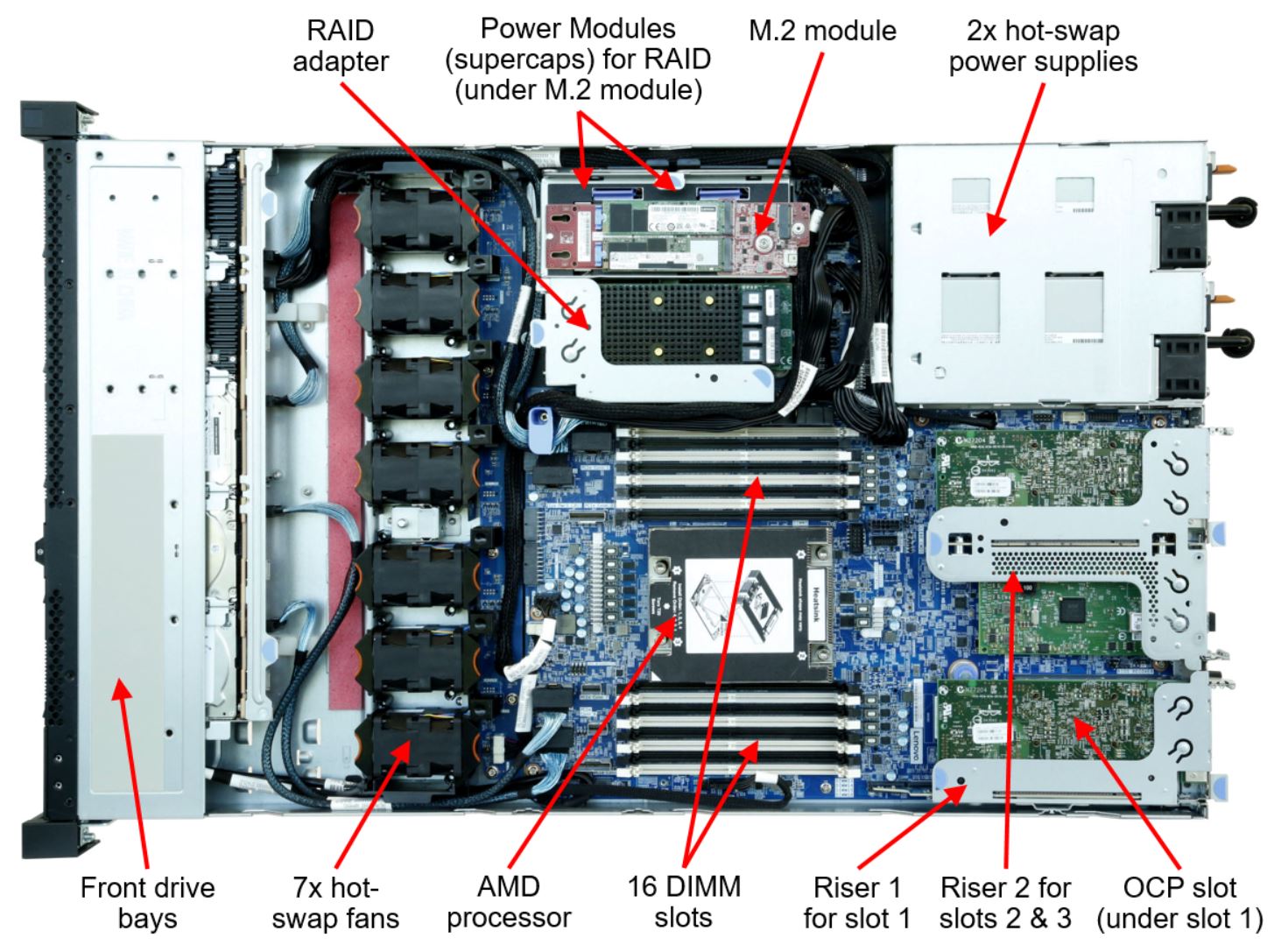
There are other options Lenovo offers to have SATA/ SAS and 3.5″ drives mixed into the chassis. That makes the server one of the most versatile 1U platforms on the market. Beyond that, one can get up to four PCIe Gen4 slots (one RAID, three expansion) and even fit up to three 75W GPUs in the chassis. We also like the use of the OCP networking slot as that is driving towards more open standards. This is a very positive step for the platform.
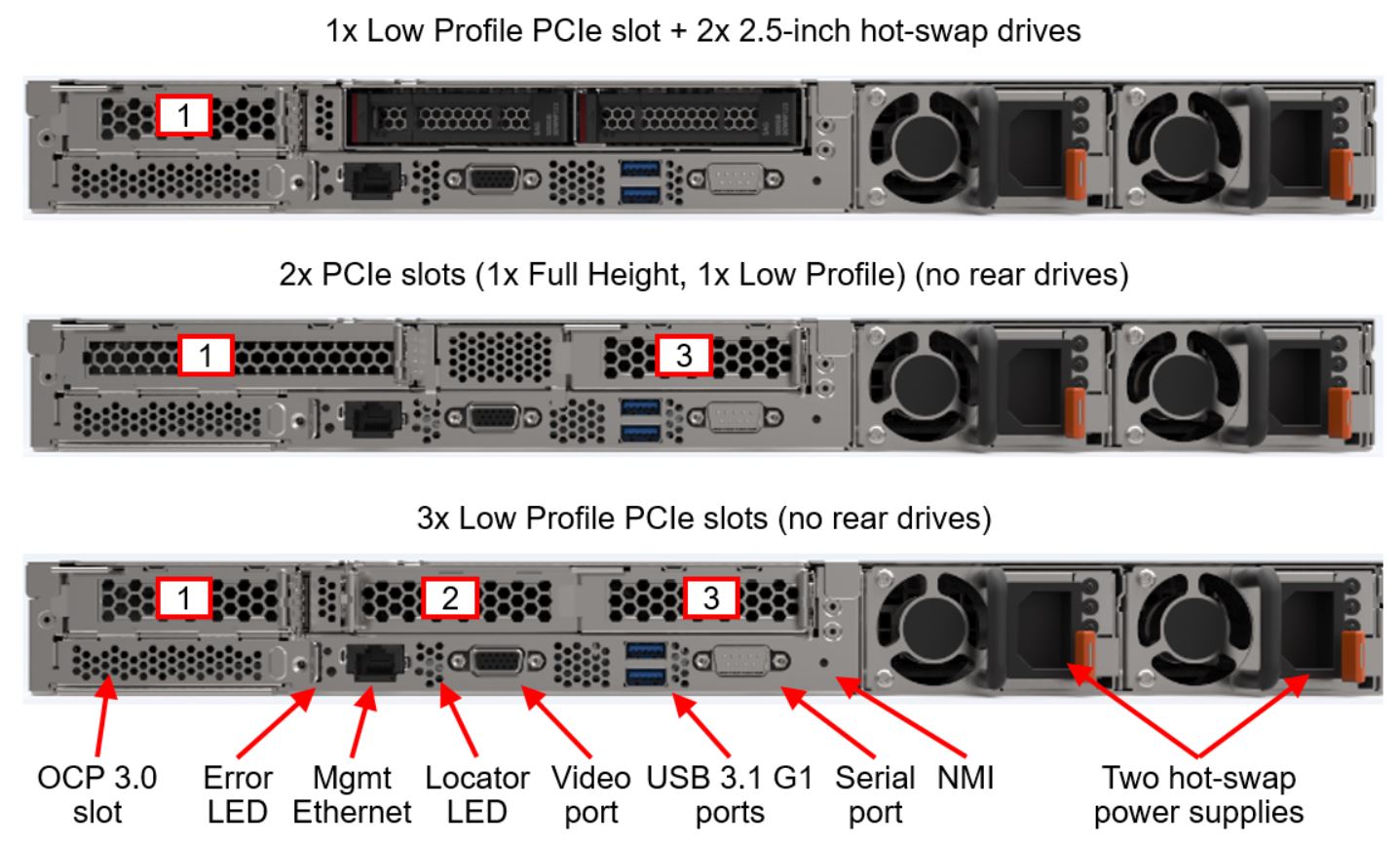
Lenovo is taking advantage of the newer 2nd generation architecture. One can see the more modern design than first-generation EPYC products like the Dell EMC PowerEdge R6415 and HPE ProLiant DL325 Gen10. You can see the BMC is using the PCIe Gen2 WAFL link new in the AMD EPYC 7002 generation:
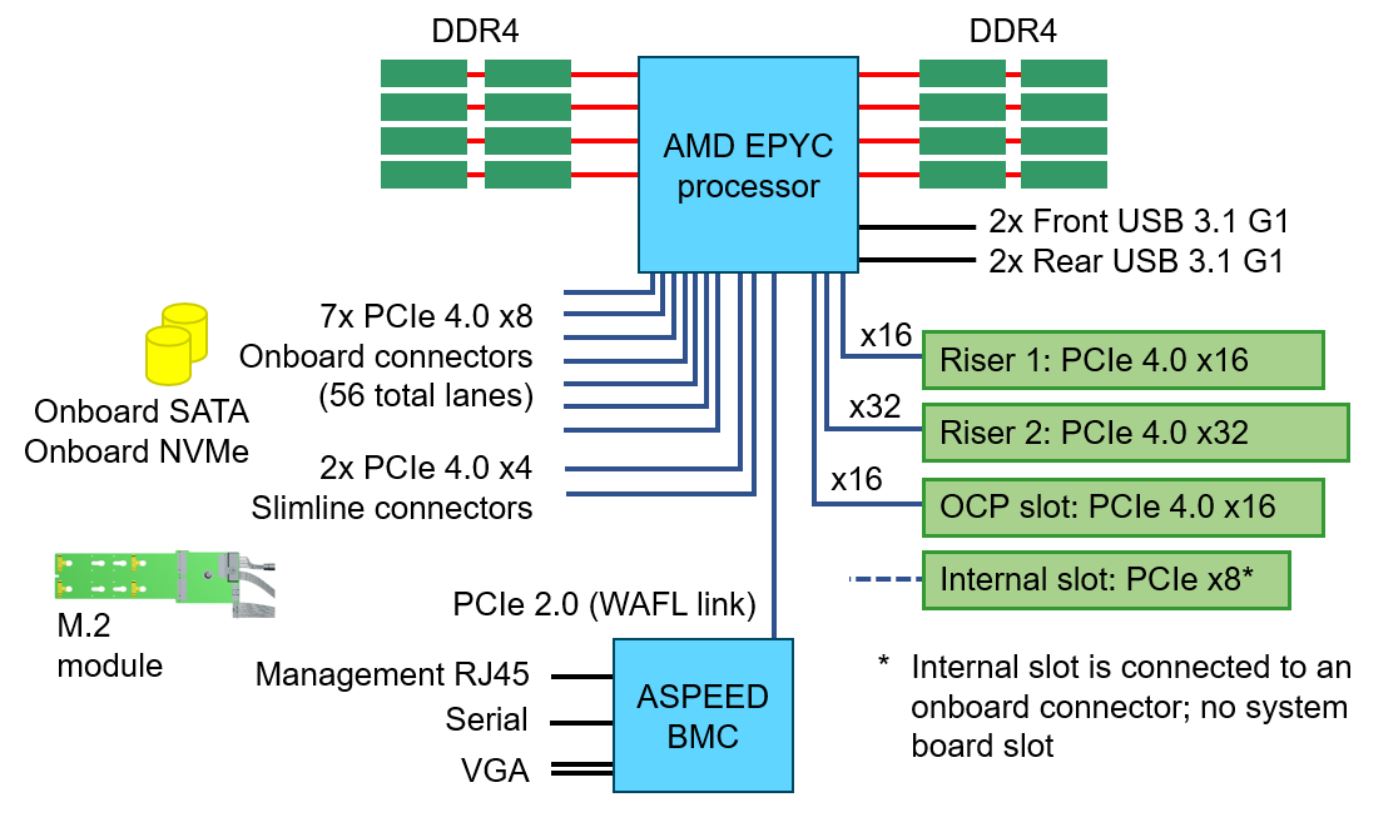
Here is a video walkthrough of the Lenovo ThinkServer SR635:
Lenovo ThinkServer SR655 2U EPYC Server
The Lenovo ThinkServer SR655 2U AMD EPYC 7002 series server is very impressive. We see the 24x 2.5″ front storage is an option but Lenovo has a variety of 2.5″ and 3.5″ drive options.
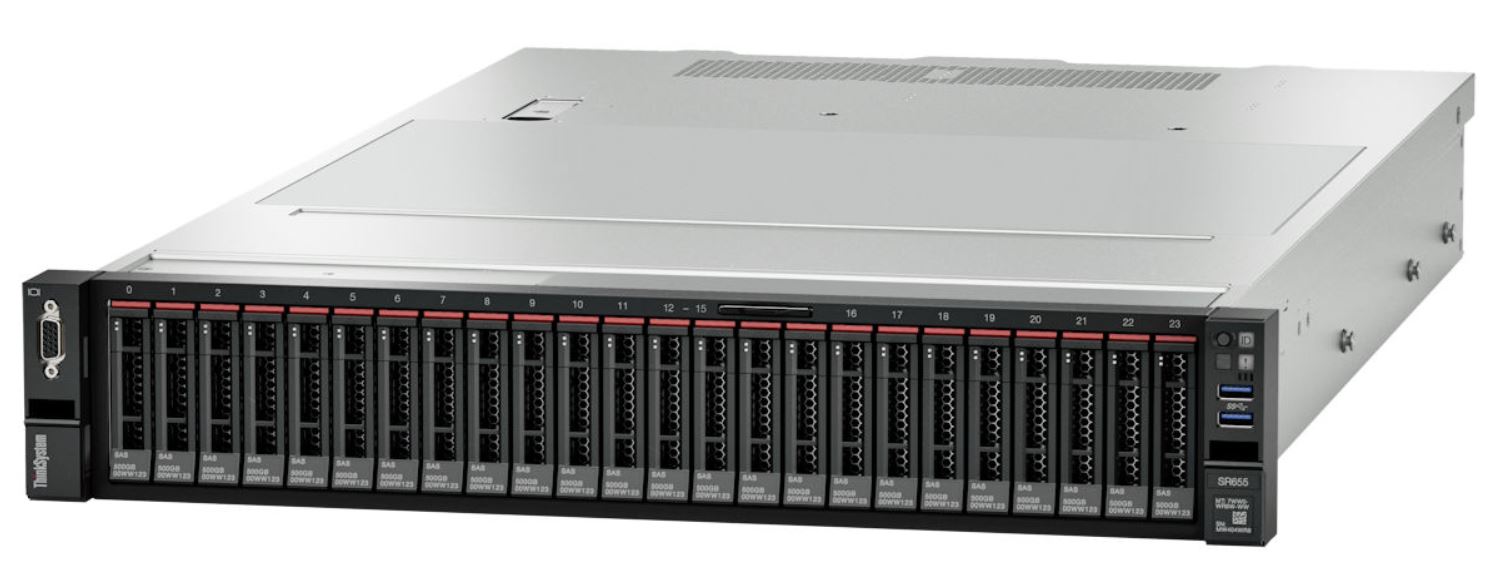
Inside, one can place even more expansion cards due to the extra U of height over the SR635. The solution we saw at the launch event actually had an array of internal drives to bring the total possible up to 36x SSDs in the chassis.
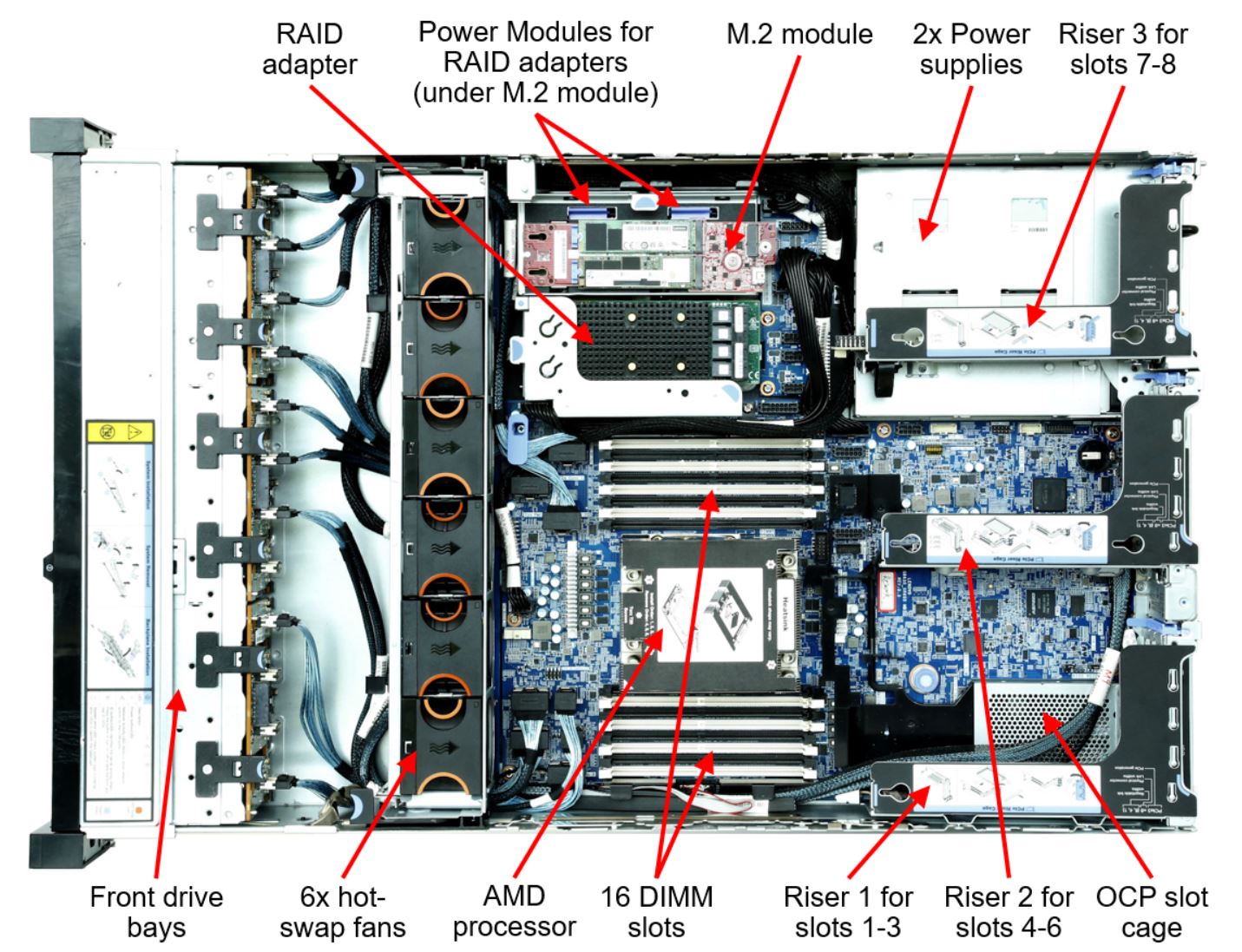
Lenovo can add different riser configurations as well as different 2.5″ and 3.5″ storage configurations to the rear of the chassis. This makes the Lenovo ThinkSystem SR655 extremely versatile. It can handle up to 225W AMD EPYC 7742 processors along with GPUs for AI inferencing. Overall, this is an extremely flexible platform.
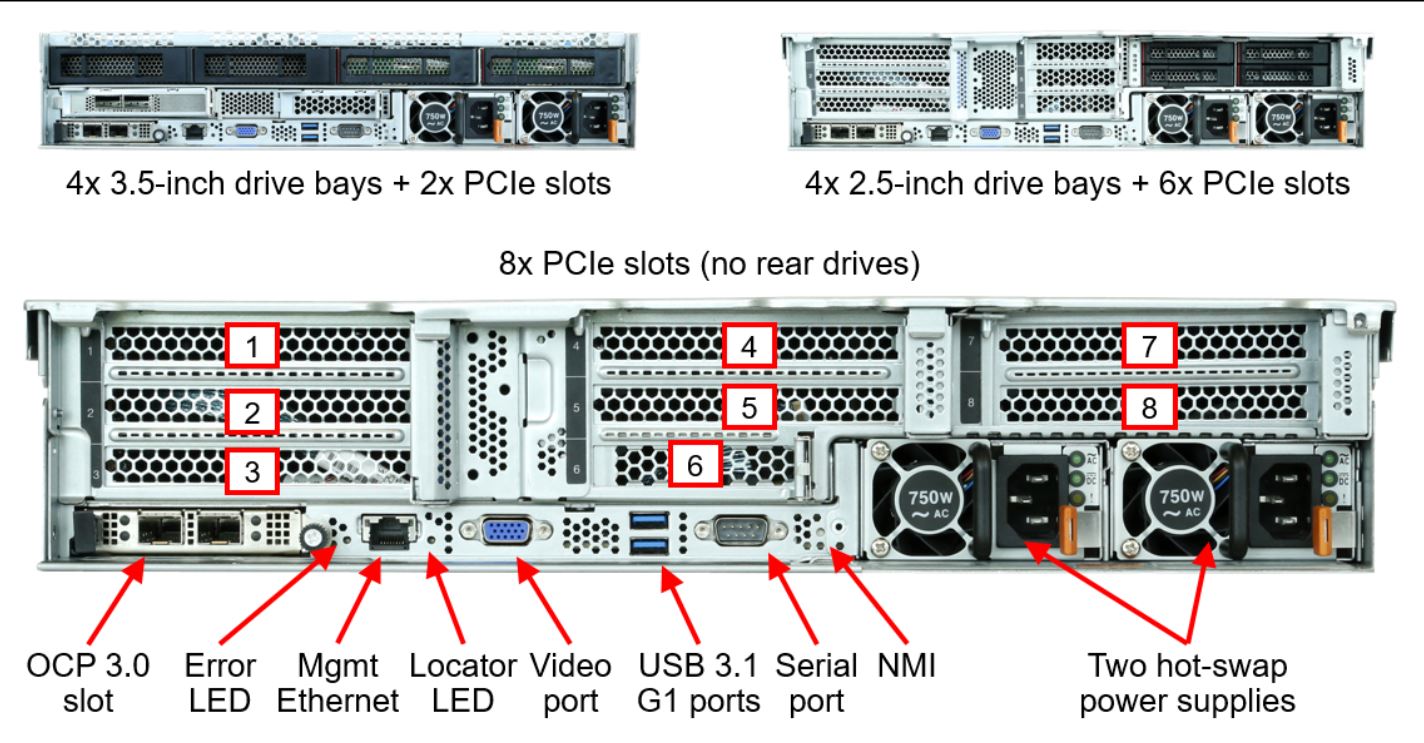
We again wanted to point to the OCP 3.0 networking slot. This can take the newest Open Compute Project networking modules like the dual 100GbE module we saw at OCP Summit 2019.
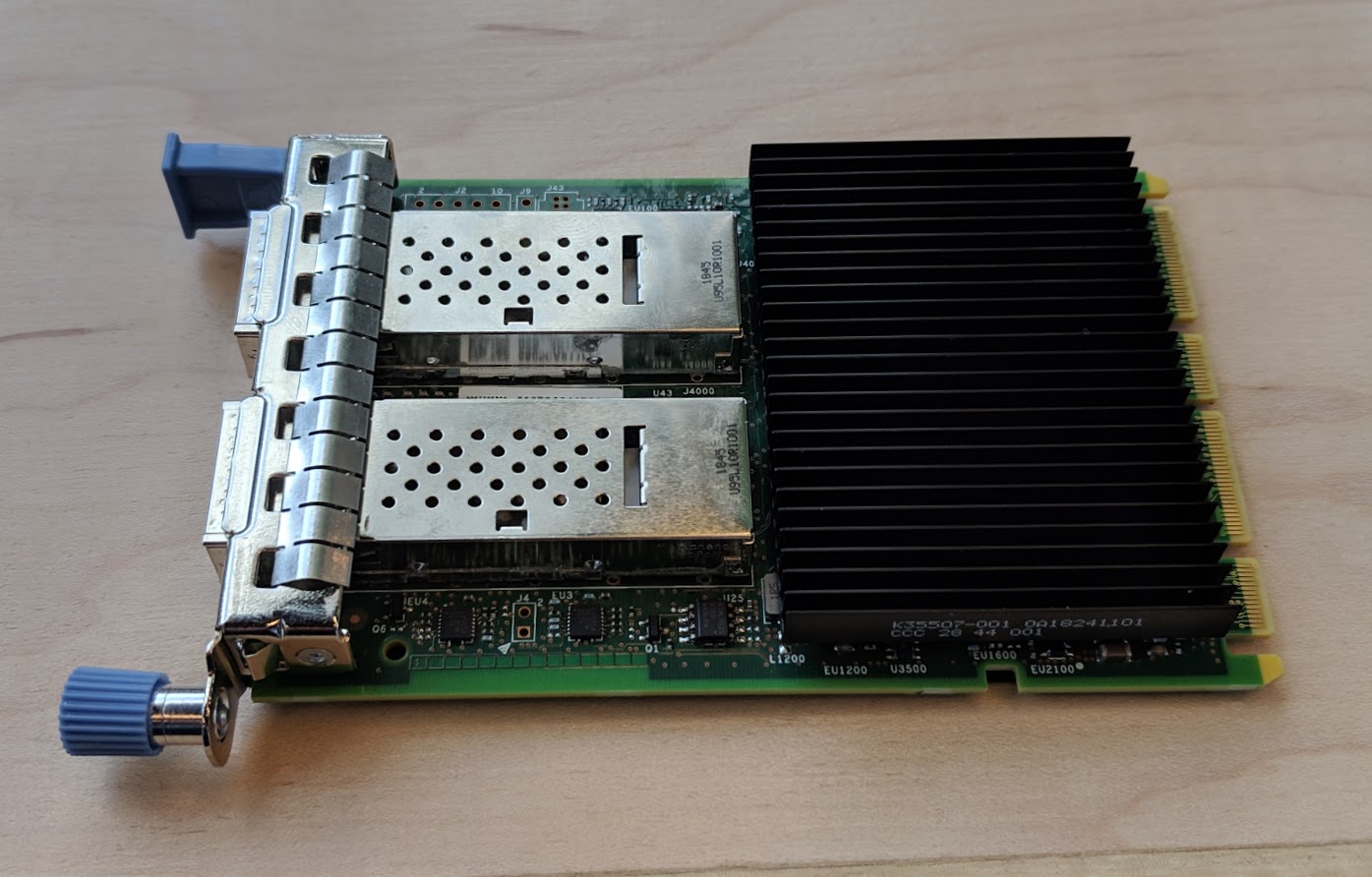
Also showing its modern roots, like the SR635, the Lenovo ThinkSystem SR655 uses the newer AMD EPYC topology with the PCIe Gen2 WAFL link for the BMC. This makes the server more expandable and modern than servers like we saw in our Ultimate Dell EMC PowerEdge R7415 Review.
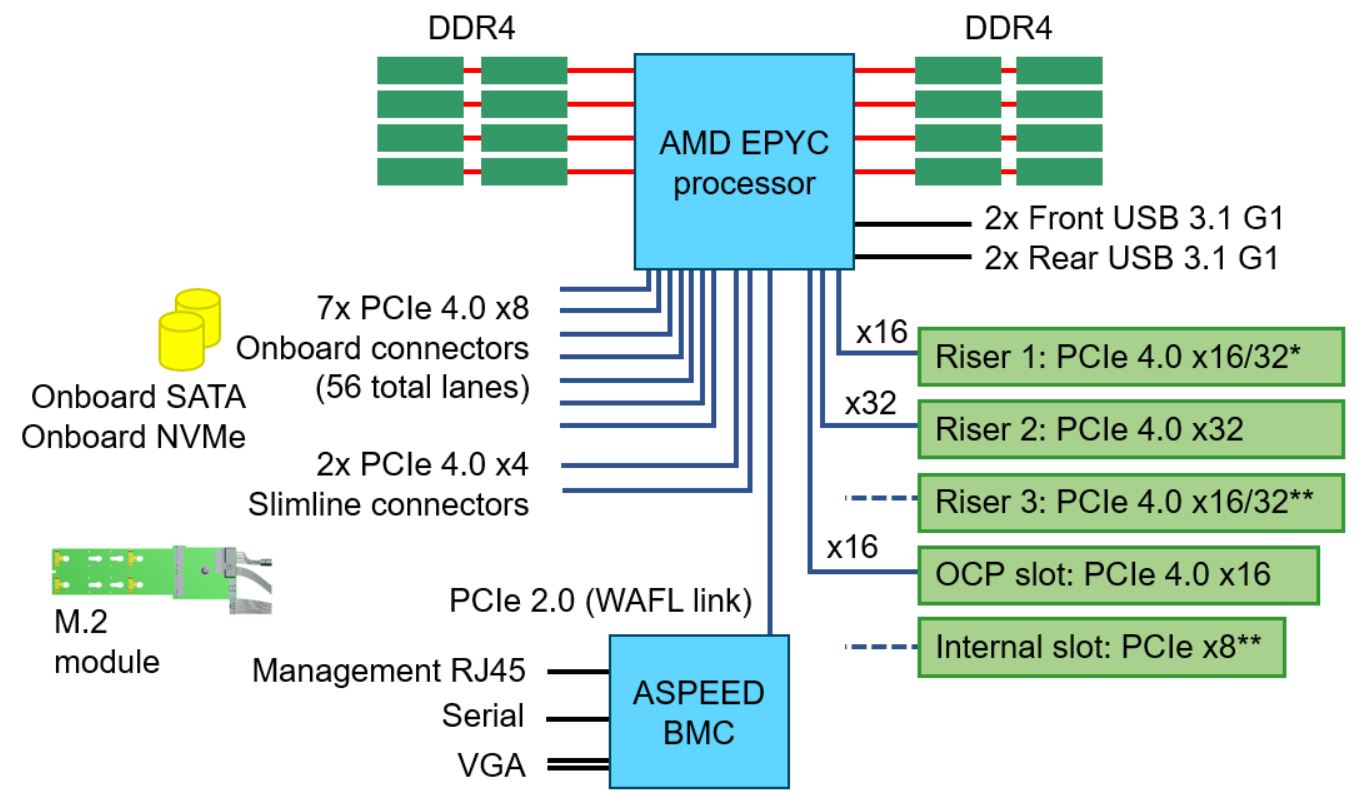
Here is a video walkthrough of the Lenovo ThinkServer SR655:
Final Words
Lenovo beat HPE and Dell EMC to get PCIe Gen4 capable AMD EPYC 7002 servers online. We heard these servers will be shipping by the end of August 2019. The impact is important. Not only did AMD add another tier 1 vendor to its stable, but Lenovo added a significant new capability. By taking advantage of the more scalable AMD EPYC 7002 platform, Lenovo told us they are hoping to help their customers and channel partners solve problems in a unique way that was not possible with Intel Xeon CPUs.
If you are a Lenovo channel partner reading STH and have been waiting for Lenovo to offer an EPYC platform, you now have two platforms that offer PCIe Gen4 before HPE and Dell EMC. Those will allow you to create higher-end NVMe configurations and virtualization servers that were not possible in the Lenovo portfolio before these servers were announced.

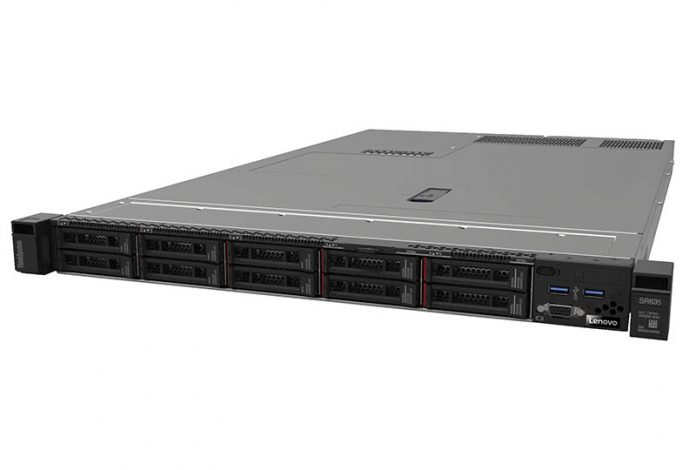



“Lenovo beat HPE and Dell EMC to get PCIe Gen4 capable AMD EPYC 7002 servers online.”
I thought Dell said they would have Rome based servers available immediately on the day of the launch
Edu – Dell and HPE both said they will be launching new servers, but not on launch day. Launch day was support for existing platforms. Lenovo beat them to it.
This is what’s so great about following STH. Everyone else just posted Lenovo has servers. STH goes into why they’re better.
NOW GET US DAMN LENOVO EPYC SEVER REVIEWS!!!!
I clicked thinking this would be just an announcement piece. Instead, you’ve got the why and impacts. I can’t wait for your reviews either.
Sorry, my bad. It was actually HPE said that, not Dell. Check the video at minute 17: https://www.youtube.com/watch?v=KIkNzTznyKU
He says several times 3 systems “available today”
Looking forward to a review of the new AsRockRack EPYC motherboard
EPYCD8-2T/R32
ATX 12” x 9.6”
Single Socket SP3 (LGA4094) supports Next Gen. AMD EPYC™ Processors
8 DIMM Slots, Supports Eight-Channel DDR4 3200/2933/2666 R DIMM, LR DIMM
Supports 8 x SATA3 6.0Gb/s (from 2 x miniSAS HD), 1 x SATA DOM and 2 x M.2
Supports 2 x RJ45 10GLAN by Intel® X550
Supports 4 x PCIe3.0 x16, 3 x PCIe3.0 x8
Supports 2 x OCulink
That’s random @Misha
This made a lot more sense since I read your guys’ EPYC 7002 series article beforehand. Great article there. Ya’ll were slow on getting this, but I actually learned a few things about the Lenovo servers here.
With 16 U.2 drives the 1U offers a crazy value position for those of us that are running Ceph as each 1U more than doubles the high speed OSD capacity per rack unit.
When I look at our current Xeon v4 based Ceph cluster spanning two full racks we could condense this into half a rack getting the same capacity, 100Gbit networking and uniform U.2 drives with the IOPS and throughput of those at less than 25% of the power consumption.
This means it’s nearly worth it to replace our entire 2yr old cluster with these purely based on TCO.
I’d like to see Patrick tear these servers down, like the two Lenovo guys. But full configurations with all the storage. I’d just like to hear his commentary.
Always impressed by you guys at STH to deliver the key points that matter to customers in your article, not merely telling the obvious from marketing chart. Thanks for educating us everyday.
Is it just me, or does the 1U series of this server look unbelievably amazing!? That is, the Lenovo ThinkServer SR635 (AMD EPYC 7002).
When it is more easily available, and I have more money, and it’s time to upgrade I will be all over this. At the moment it’s merely “extremely cool” but I don’t actually need it. So it would be a major indulgence, and I’ve already got enough great hardware.
Am I the only person here who has fallen in love with this server?
@Edu, are there any specs for refreshed HPE ProLiant DL325 and DL385 with new AMD EPYC 7002 CPUs? I haven’t seen any update in HPE product resources so far. HPE OCS (One Config Simple) updated with very few AMD EPYC Gen2 BTO options only (7262, 7302 – 150W, 7402P – 180W). Can you provide more details?
HPE has just updated its product product bulletin, so finally having it today!
Mike – our DL325 Gen10 with EPYC 7002 just arrived. Trying to do the Lenovo reviews also.